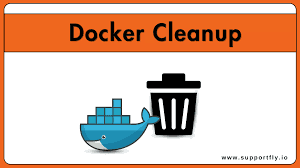How to Completely Clear Docker: Remove All Containers, Volumes, and Images on Windows

Table Of Content
- How to Completely Clear Docker on Windows
- Common Use Cases for Resetting Docker
- Prerequisites
- Step-by-Step Guide: Clear Docker on Windows
- 1. undefinedStop Docker Desktop (Optional)
- 2. undefinedRemove All Containers
- 3. undefinedRemove All Docker Images
- 4. undefinedRemove All Volumes
- 5. undefinedRemove Networks (Except Defaults)
- 6. undefinedPrune Unused Docker Resources
- Verification: Check if Everything is Cleared
- List Containers
- List Images
- List Volumes
- List Networks
- When to Use This Process
- Conclusion
How to Completely Clear Docker on Windows
There are times when you need to reset your Docker environment by removing all containers, volumes, networks, and images—such as when troubleshooting issues, freeing up disk space, or preparing a clean environment for new projects.
This guide walks you through how to forcefully delete Docker containers, images, volumes, and networks on Windows. Whether you're running into conflicts or just want a fresh start, this guide has you covered.
Common Use Cases for Resetting Docker
- Disk Space Issues: When Docker consumes too much disk space with leftover containers and images.
- Corrupted Containers/Images: Resetting everything helps when containers or images are corrupted.
- Development Environment Refresh: If you're moving between projects or testing new configurations.
- Troubleshooting: Sometimes a complete reset helps when you encounter strange or persistent Docker issues.
Prerequisites
Ensure Docker Desktop is installed and running on your Windows machine. If you're using PowerShell or Command Prompt, open it with Administrator privileges for the best results.
Step-by-Step Guide: Clear Docker on Windows
1. Stop Docker Desktop (Optional)
Stopping Docker Desktop prevents conflicts while removing resources.
- Right-click the Docker icon in the taskbar.
- Select Quit Docker Desktop.
2. Remove All Containers
Containers are lightweight environments that run applications. Use the following command to forcefully stop and remove all containers:
docker rm -f $(docker ps -aq)docker ps -aq: Lists all container IDs (both running and stopped).-f: Ensures containers are forcefully removed.
3. Remove All Docker Images
Docker images can take up significant space. To remove them all, run:
docker rmi -f $(docker images -aq)docker images -aq: Lists all image IDs.-f: Forces image removal, even if containers are using them.
4. Remove All Volumes
Volumes store data generated by containers. Use this command to delete all volumes:
docker volume rm $(docker volume ls -q) --forcedocker volume ls -q: Lists all volume IDs.--force: Forces removal without confirmation.
5. Remove Networks (Except Defaults)
Docker networks allow containers to communicate. Remove all non-default networks with:
docker network rm $(docker network ls -q | findstr /V "bridge host none")findstr /V: Filters out default networks (bridge,host,none).
6. Prune Unused Docker Resources
If there are any lingering dangling resources (like stopped containers or unused networks), use the following command:
docker system prune -a --volumes -f-a: Prunes all unused images, not just dangling ones.--volumes: Removes unused volumes.-f: Skips confirmation prompts.
Verification: Check if Everything is Cleared
After running the above commands, verify that no containers, images, volumes, or networks remain:
List Containers
docker ps -aThis should return an empty list.
List Images
docker imagesNo images should be listed.
List Volumes
docker volume lsNo volumes should appear.
List Networks
docker network lsOnly default networks (bridge, host, none) should remain.
When to Use This Process
- Before starting a new project: To ensure you don't encounter leftover resources from previous projects.
- When debugging Docker issues: A complete reset can eliminate environment-related problems.
- To reclaim disk space: Removing containers, images, and volumes frees up significant space.
- When experimenting with Docker configurations: If you're switching between setups or testing new images.
Conclusion
Clearing all Docker resources can be a lifesaver when you're running out of disk space, troubleshooting issues, or preparing a clean slate for new projects. With the steps provided above, you now know how to forcefully remove all Docker containers, images, networks, and volumes on Windows.
These commands ensure nothing is left behind, helping you avoid conflicts and start fresh with Docker. Be mindful when using these commands, as they delete everything—including important data or configurations stored in containers and volumes.
With this knowledge, you're ready to reset your Docker environment whenever needed. Happy coding!
